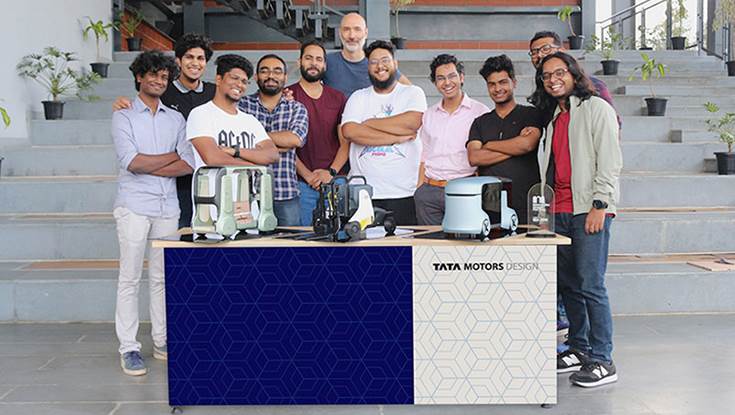Homegrown automaker Tata Motors, which is the No. 4 player in India’s passenger vehicle market, is looking to expand its design footprint in India. The company plans to invest in a new design studio in the next couple of years as it eyes rapid growth in market share in the near future with increasing demand for its ‘New Forever ‘ range of passenger vehicles that includes the Tiago, Tigor, Altroz, Nexon, Harrier, and Safari.
At present, the carmaker has three design studios, one each in the UK, Italy, and India, and has zeroed upon the latter to expand its design capacity in terms of facilities, and grow its footprint with another state-of-the-art design centre in the country as it gears for an aggressive market push.
According to Martin Uhlarik, Global Design Head, Tata Motors, “We are significantly expanding our portfolio and introducing a lot of new nameplates. At the same time, all our existing products are getting constantly refreshed as well.”
“Our amount of work is growing exponentially and our three existing studios are barely coping with work. One can expect a big investment in the next couple of years in terms of expanding our design capacity in terms of a new facility in India,” he told Autocar Professional.
Tata Motors has over 240 designers stationed across its three design studios, with the UK and India (Pune) studios employing 100 designers each. All its designers come with individual specialisation, and the teams also include specialists mapping the social and technological trends to bring future-ready products. The company says it regularly absorbs students from design colleges, and around 40% of its current design workforce across the three studios comprises interns.
“We have our relationships with all design schools in India and overseas as we are constantly looking at getting design students. We take students from across colleges, and tend to offer them positions once they complete their internships with us,” Uhlarik said. He added that three students – one each from the colour, exterior and interior domains – were recently offered positions during their summer placements, “and it is always nice to see their reactions on receiving a contract from us.”

In December 2022, Tata Motors Design partnered Strate School of Design, Bengaluru to bridge the talent gap between industry and academia, producing workforce-ready graduates capable of designing as well as manufacturing sustainable and futuristic automotive solutions.
Tata Motors’ Global Design Head further pointed out that the company has taken a number of students, particularly from the Strate College, Bengaluru, as design interns, and has also undertaken a sponsored project with the institution to design a last-mile light mobility delivery vehicle. “Globally, our design centres are very cosmopolitan, and we have 12 nationalities, including people from the UK, Korea, and North America,” he added.
State-of-the-art infrastructure
The company says it adopts a conventional design approach of ideation, sketching, digital- and clay-modelling processes for any new design, and is mixing it with several new technologies such as digital design tools, rapid prototyping, and 3D printing for quick assessments.
“Our ‘Model Operations’ department is equipped with 3D printers and stereolithogrophy machines that enable us to make individual parts, such as grilles, lamps, as well as complete scale models in-house, for assessments,” explained Uhlarik.
He added that given the expansive range of show cars and models the company has developed over the years, Tata Motors could set up a Brand Experience Centre in the future, and showcase its design initiatives to the public. “Design is an applied art, and it is a collaborative exercise. The market in India is growing exponentially, and while we would traditionally see one-car families, the society is now transitioning into multi-car households. Therefore, there is more variety, and the products are fracturing into smaller segments.
“An automobile purchase is usually the second biggest purchase after property, and one has to be a futurist to design cars that remain relevant ten years down the line,” pointed out Uhlarik.
Tata Motors plans to make its new design studio a world-class facility, one that would set the benchmark for automotive design centres in India. “It will become the most aspirational automotive design studio in the country and would be on the radar of every design student coming out of college,” concluded Uhlarik.
